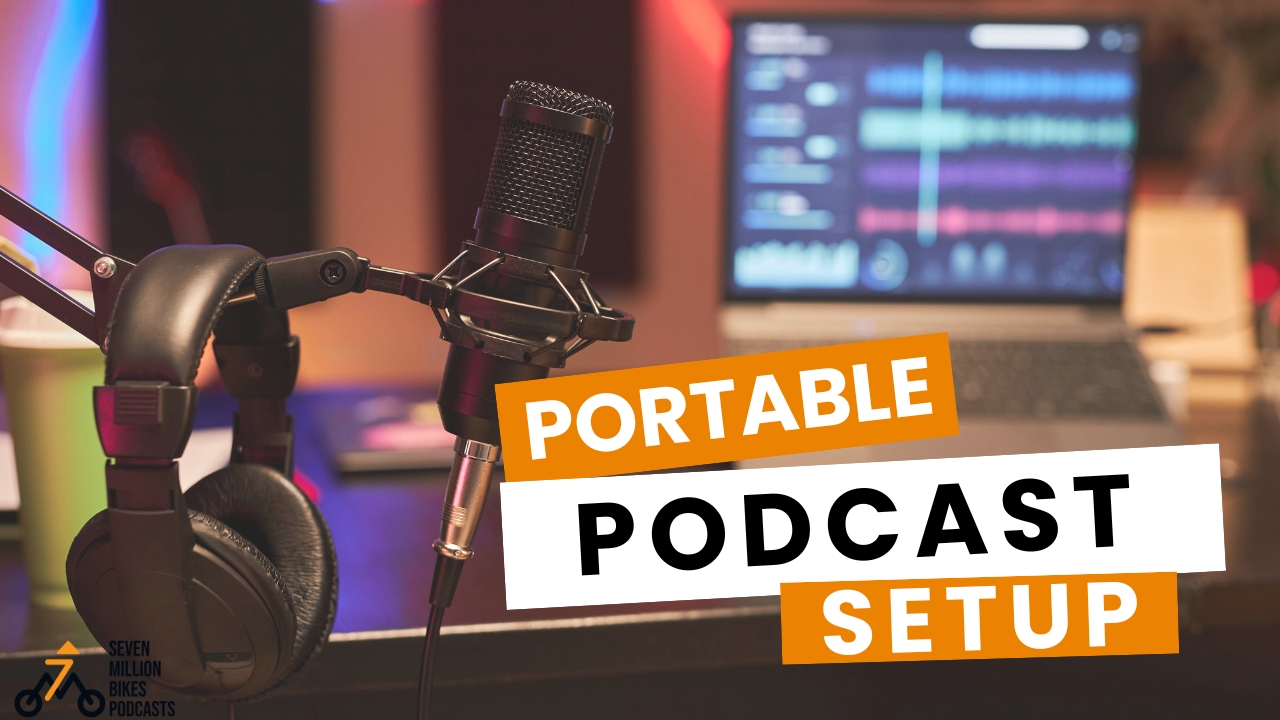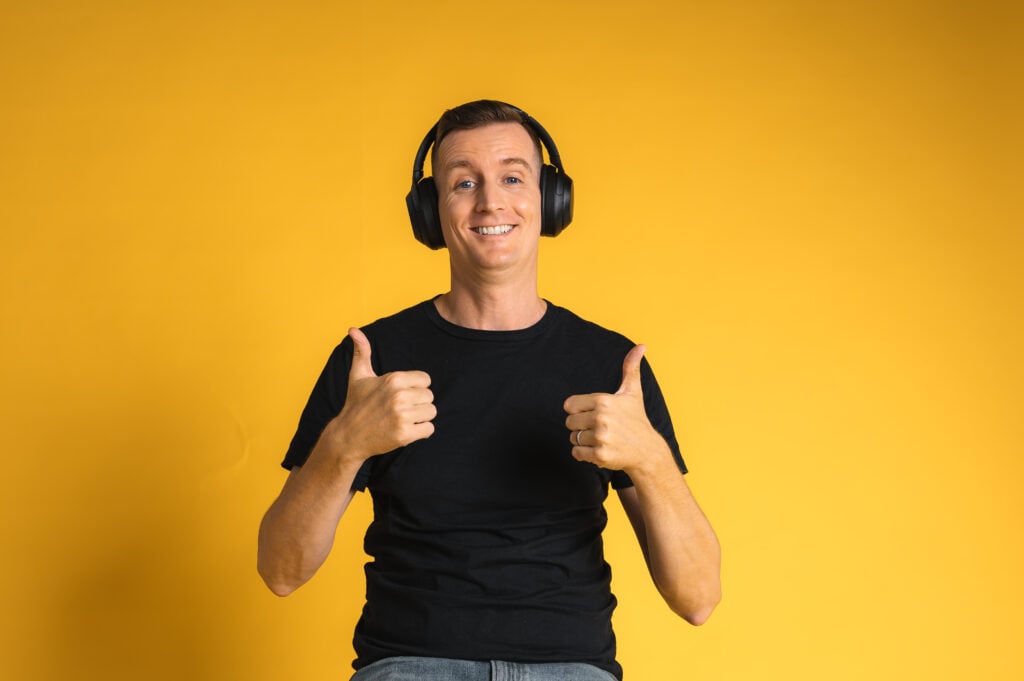Portable Podcast Setup: Tips and Guidance
My name is Niall Mackay, The Podcast Guy and I’m the founder of Seven Million Bikes Podcasts. I started my first podcast in 2019 as a hobby and now I’m offering podcasting services to help people create impactful stories and inspire the world.
In this post, I’ll walk you through my portable podcasting setup, the tools I use, and the techniques that allow me to record high-quality podcasts from any location.
Why Portability Matters in Podcasting
When I started podcasting in 2019, I didn’t have much. I used a Blue Yeti microphone and a 2010 MacBook Pro—basic, affordable, and easy to use. My setup wasn’t flashy, and my recording environment wasn’t perfect, but it worked. That’s the beauty of podcasting: you don’t need a lot to get started.
Those early days taught me a lot about making the most of what you have. The simplicity of my setup gave me the confidence to get into podcasting without feeling overwhelmed by expensive equipment or complex technology. Over time, I upgraded as I learned more, and that’s when I discovered the true power of a portable podcasting studio.
Related Post: Creative Podcast Setup Ideas: Sound Like a Pro for Every Budget
Flexibility to Record Anywhere
One of the biggest advantages of a portable setup is the freedom to record wherever you need. I’ve recorded podcasts in all kinds of places: a meeting room in my building, a client’s office, and even noisy environments like the streets of Saigon.
Here’s why portability makes a difference:
- Adapt to different locations: Whether you’re recording solo, with guests, or for a client, you can bring your setup anywhere.
- Save time and money: You don’t need to book studio space or worry about commute times.
- Capture unique environments: Recording on location can add character to your podcast, making it more engaging for listeners.
I pack all my equipment into a small “magic box,” which fits on the back of my bike. It’s compact, efficient, and contains everything I need to record professionally. This setup is a game-changer for anyone who doesn’t want to be tied to one place.
The Downsides of Fixed Studios
While professional studios are great, they’re not always practical for podcasters.
- Cost: Renting a studio can be expensive, especially if you’re producing episodes regularly.
- Space: Setting up a home studio takes room, which isn’t always an option.
- Lack of flexibility: If you’re tied to one location, it can be inconvenient for you and your guests.
With a portable setup, you avoid these challenges. You’re not paying rent, you don’t need extra space at home, and you can bring your podcast to your guests instead of asking them to come to you.
Portability is one of the best things about podcasting. With the right setup, you can record anywhere, adapt to new challenges, and even turn your equipment into a source of income. It’s affordable, flexible, and incredibly rewarding, whether you’re just starting out or looking to expand your podcasting services.
How to Set Up and Record a Podcast Anywhere
Portability is key to my workflow, and everything I need fits into a compact box called a “Givi box,” a common item in Vietnam. This box can be securely mounted on the back of my bike, making it easy to carry around, even in a bustling city like Saigon.
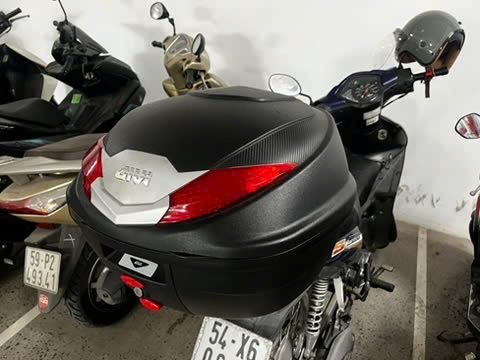
The Magic Box
Here’s what’s inside my magic box:
My go-to is the Shure MV7, a dynamic microphone that minimizes background noise. It’s high-quality and versatile.
It’s incredibly versatile, delivering clear and focused sound while minimizing background noise. This is especially important when recording in less-than-ideal spaces, like noisy rooms or echoey environments. Since I didn’t receive the original packaging, I store it in a padded wine box—a thoughtful gift from a friend. It may not look fancy, but it keeps the mic safe and secure during transport.
In addition to the Shure MV7, I carry the Maono PD200X, which offers fantastic sound quality at a much more affordable price point. It’s a great backup mic or an option for clients who want a high-quality recording without investing in premium gear.
- Audio Interface:
To connect my microphones and manage recordings, I rely on the PodTrak P4. This lightweight and portable audio interface is a game-changer for podcasters on the go. It supports multiple XLR inputs, making it ideal for recording interviews or multi-person podcasts.
The PodTrak P4 is easy to set up, and its compact design means it fits neatly into my box without taking up much space. I’ve used it for years, and it has proven to be a reliable tool for capturing professional-grade audio.
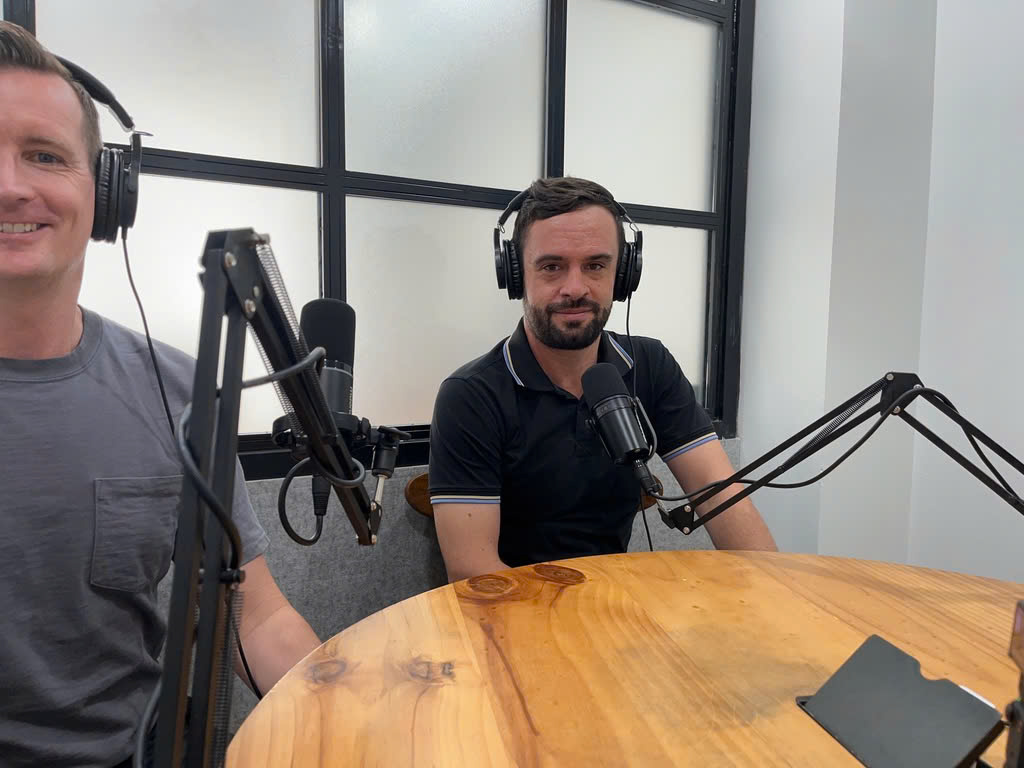
- Boom Arms:
When it comes to positioning microphones, I prefer boom arms over traditional mic stands. Boom arms are less bulky, take up less space, and allow for precise mic placement, which is crucial for achieving clear audio. They also make it easier to keep the microphone close to the speaker’s mouth—a key factor in minimizing echo and capturing rich sound.
The boom arms I use are budget-friendly, and while they get the job done, they do wear out over time. For example, the tightening mechanisms on some of my older boom arms have stopped working, so I’ve had to replace them. Despite this, I continue to use affordable boom arms because they’re practical and accessible for most podcasters, especially those on a tight budget.
Monitoring is an essential part of the recording, and I always use Audio-Technica ATH-M30x headphones to listen in real-time. Wearing headphones during a recording session lets me hear what the microphone is picking up, rather than relying on what my ears can detect in the room. This helps me catch issues like background noise, echo, or even something as simple as a guest playing with a cable.
I carry spare headphones for guests or co-hosts, ensuring that everyone involved in the session can monitor the audio. For editing, I prefer to use my personal Sony WH1000XM4 headphones, which are specifically tuned for audio production. However, I try not to use these during live recordings to keep them in top condition.
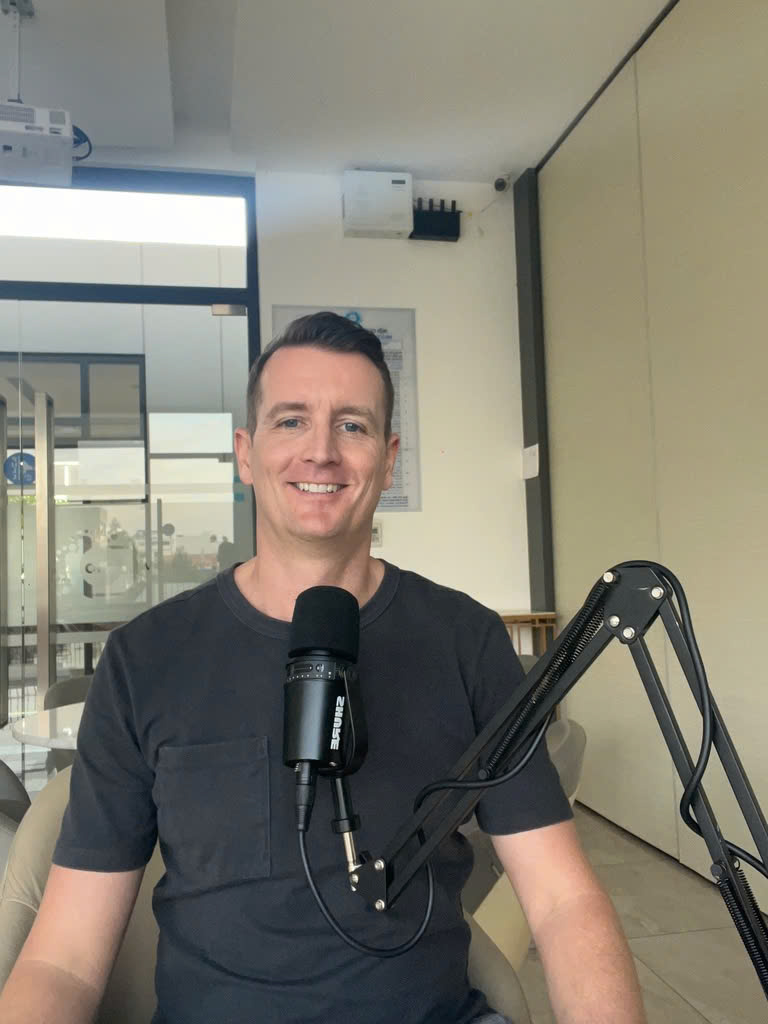
- Cables and Tools:
No portable setup is complete without a collection of XLR cables and connectors. I keep a variety of these neatly organized in my box to avoid tangling and ensure quick setup. Having spares is critical, as cables can fail unexpectedly. I learned this lesson the hard way during a recording session when I realized mid-session that one of my XLR cables was broken. Now, I always bring backups.
I also include basic tools like pliers and a spanner for on-the-go fixes. These have come in handy more times than I can count, whether it’s tightening a loose mic clamp or adjusting a connection. When you’re working in different locations, something unexpected always comes up, so being prepared with the right tools makes all the difference.
Tips for Creating the Ideal Podcast Recording Space
Recording high-quality audio isn’t just about having great equipment—it’s also about the space you’re recording in. A well-prepared environment can make a huge difference in reducing background noise, minimizing echo, and improving overall sound clarity.
- Use Carpet Instead of Tiles
Hard surfaces like tiles or wooden floors can reflect sound, causing unwanted echoes that make your recordings sound unprofessional. The carpet, on the other hand, absorbs sound waves, reducing the amount of reverberation in the room.
In addition to floors and windows, other hard, reflective surfaces like glass tables or bare walls can also cause sound issues. Replace reflective furniture with soft materials where possible, or cover them with fabric.
- Avoid Windows to Minimize Outside Noise
Windows are a common source of noise in a recording space. From passing cars and honking horns to construction noise or chatter outside, windows allow external sounds to seep in and disrupt your podcast.
- Keep the Space Cozy and Tight
Large, open spaces can cause sound to bounce around, creating a hollow or “echoey” effect in your recordings. To counter this, aim for a smaller, cozy room with soft furnishings like couches, curtains, and bookshelves.
- Control Lighting for Video Recordings
If you’re also recording video podcasts, think about your lighting. Natural light is your best friend, but it can be tricky to manage.
Tools and Technology for Professional Sound
The right tools can elevate your podcast from good to great, and in my experience, one of the most impactful advancements in podcasting is the use of AI-powered technology.
Descript’s Studio Sound is an AI-powered feature that cleans up audio with just the click of a button. It reduces background noise, enhances voice clarity, and balances audio levels—all without requiring extensive technical expertise. This tool has been a revelation for me, particularly when recording in less-than-ideal spaces.

I remember when I first tested Studio Sound on one of my recordings. I had captured the episode in a noisy, echoey room, and the raw audio was far from perfect. After running it through Studio Sound, the difference was astonishing.
For more software recommendations, check it out: The Top 10 Powerful Podcast Maker Apps
How to Monetize Your Portable Equipment
Your portable podcasting studio isn’t just for your own episodes—it’s also a tool you can use to earn money. Over the years, I’ve worked with clients who don’t have their own equipment or don’t know how to set up a proper recording environment. That’s where I come in.
Here are a few ways you can monetize your portable setup:
- On-location recording sessions: Offer to bring your gear to clients’ homes or offices and handle the recording for them.
- Podcast production packages: Combine recording, editing, and post-production services to create a complete package for clients.
- Workshops or training: Teach others how to use portable equipment to record and produce their own podcasts.
When you offer these services, you’re not just making money—you’re also helping others create better content. And because your setup is portable, you can work with clients in all kinds of locations, giving you more opportunities to grow your business.
Conclusion
Starting with minimal equipment, I’ve been able to grow my podcasting journey into a successful venture, producing award-winning content and helping others do the same.
If you’re ready to take your podcast to the next level—or even turn your setup into a business—remember that the tools and techniques I’ve shared here are accessible to anyone. And if you’d like a little extra guidance, feel free to reach out to me at Seven Million Bikes.

